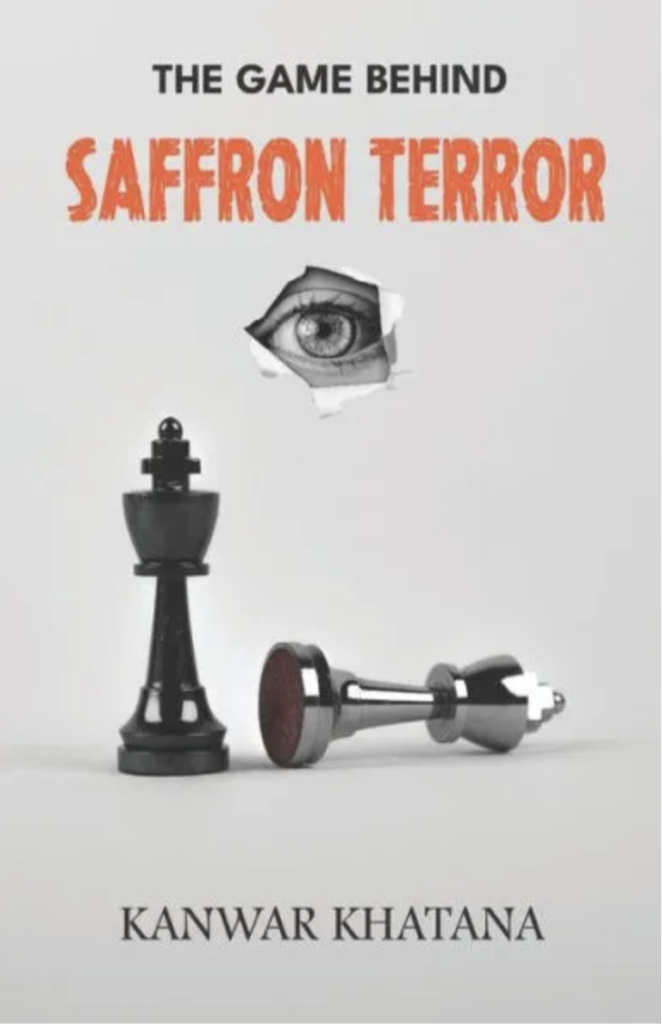
This book, laid out in 21 smooth-flowing chapters, deals with the conspiracy of creating a so-called theory of “Hindu Terror” and its developments and fallouts, orchestrated, as claimed by the author, by the Congress Party to gain political control of India. It is a fictionalised account of actual happenings on the ground as they unfolded, culminating in the dastardly Mumbai attacks on 26 November 2008, which lasted until 29 November.
The world was witness to Mani Shankar Aiyar, former Congress MP, pleading on a Pakistan TV channel for Pakistani help to bring the Congress back to power in India during the 2019 general elections. But this is nothing compared to what veteran-scholar Kanwar Khatana has narrated in this book. It is anathema to witness, as narrated in this book, the extent to which a political party stooped to gain power. In the process, a foreign terrorist organisation was enabled to commit horrific attacks on Indian soil, in a bid to create internal strife and destabilise the nation.
The book covers how and why the conspiracy was hatched, as claimed by the author, at the Congress Party headquarters in January 2006. This was concurrent to the Musharraf-Kayani plan to keep launching terror attacks in India and in line with Zia ul-Haq’s 1000 cut policy. The book covers the ISI links with terrorist organisations including the Lashkar-e-Taiba (LeT), and how Congress approaching Pakistan was a bonanza for Pakistan. Interestingly, the book also covers how the Pakistani army controls the formation of governments in Pakistan. In the instant case, it describes how Benazir Bhutto was lured from abroad to return to Pakistan and promised dropping all charges against her in exchange for continuing Pakistani military supremacy in affairs of Pakistan, together with the ISI recruiting an al Qaeda operative (through the LeT) to assassinate Benazir.
Significantly, the book covers the tragic saga of how the brilliant career of Lt Col Prasad Purohit was ruined by falsely accusing him in the 2008 Malegaon blast case in which six persons were killed. Purohit had won accolades in counter-insurgency operations in J&K. He was attending a course in Pachmari when he was asked to return to Delhi but the escort cunningly handed him over to the Maharashtra Police without any notice. Purohit was continuously tortured by Hemant Karkare, who was then heading the Maharashtra Anti-Terrorism Squad (ATS) along with Pragya Thakur, a co-accused in the Malegaon blast case. Pragya Thakur is presently a Member of Parliament, but Purohit continues to battle his case in court. Would a serving army officer indulge in blasts to kill civilians? Not only was such an accusation unprecedented, so was the readiness of the then Army Chief to hand over Lt Col Purohit to Maharashtra Police instead of the army instituting its own investigation and trial for the serving army officer.
The book describes in detail the 26/11 Mumbai terrorist attacks in 2008, the selection of terrorists, their training under the Pakistani military at Karachi, sea travel to Mumbai and terror attacks at multiple locations in Mumbai. It is not the prior photography of the target locations, but possible support from within that enabled the terrorists to carry out their attack. When the terrorists landed by boat in Mumbai, police took no cognisance of locals reporting the arrival of terrorists with weapons at the beach. Hemant Karkare, still heading Maharashtra ATS (who had tortured Lt Col Purohit and Pragya Thakur) was killed along with another member of ATS by terrorists.
Towards the end, Khatana writes that the game of derailing India, which the ISI loves to play, is still on. More than Pakistan, it is the narrative of interested politicians to condone terrorist actions. Lt Col Purohit, presently out on bail, has been used as a tool amid political machinations. He will eventually be freed of all charges by the courts because he is innocent.
The book makes interesting reading. The chapters are small and the language used simple. As the plot unfolds, the reader is gripped by a thrilling narrative, which makes the book simply unputdownable. It is recommended to be read by all.






Wonderful book indeed
An excellent book review on a book must read list.
The author uses everyday language to keep your attention in control all the time.
Must read this. Where available.. ??
When we Hindus wake up from Fake concepts like Secularism, Bhaichara, Mahatma, Chacha, eeshwar Allah tero naam, Saibaba, Bollywood,Leftist, Secular,Intellectuals etc JNU AMU, Jamia Islamiya
All are tools of Gazwwa-e-Hind
Do not blame Islam, every Hindu who worship Mahatma GAZI & Mohammed NEHRU is responsible for the mess that Sanatana finds itself today!!
Time is running out, just study the history of LEBNON For last 75 years!! Islam swallowed Lebnon in 70 years!! India will be swallowed in next 30. Unless a Hindu Dictator takes over
Democracy is a tool of ISLAM, Democracy is a morphine, Democracy is a sedative, you die slowly, painfully
Our First Enemy is Democracy and present form of Executive and Judiciary All the three are colluding and hurling the only Hindu nation on planet towards Gazwwa-e-Hind
A very honest and pleasent to read book review dear Gen Katoch.
Rgds,
Col Rajeev Chopra
Veteran